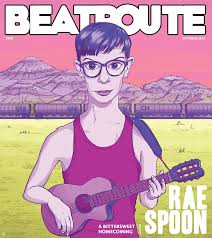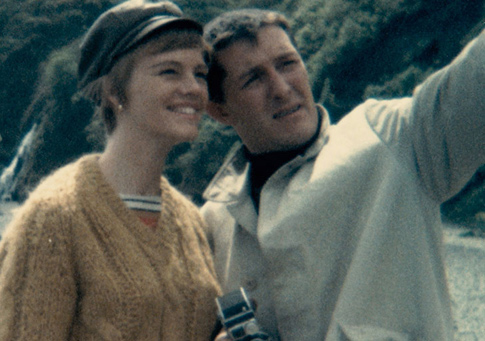My Prairie Home (2014), is a musical documentary directed by Chelsea McMullan, with music composed by Rae Spoon. The film title was inspired by Rae’s latest album that bears the same title. Rae Spoon is an incredibly talented singer, guitarist, and song writer. According to journalist Bryen Dunn, “As a young person, Rae used music both as an escape and as a place to build a world they could live in safely. Songs about death, coming out as queer during high school, and surviving abuse are all sung by a voice that can break a heart and fill it with hope at the same time”. The documentary depicts Rae’s growth and struggles with their (her) transgender identity, Pentecostal upbringing, abusive father, and development as a musician.
Chelsea McMullan states that “[Her] intention for the film was to create a biography of a feeling. I want the audience to really understand in a visceral way what it’s like to be Rae Spoon. Also if it exposes more people to Rae’s music, then that’s great too…Finally, my films are not overtly political but I would love if this film starts a conversation about gender. Since meeting Rae, my perspective on gender has totally shifted. It’s liberating when you sort of let the binary fall away and just be.” This film remained objective to its goal. The audience was exposed to Rae’s music, various struggles, and search for an identity.
Love is a Hunter (My Prairie Home) Rae Spoon
Rae grew up in Calgary, Alberta in a suburban Pentecostal family. Rae’s father suffered with a mental illness, and therefore contributed towards a very abusive and unstable environment. During their adolescence Rae moved in with their grandmother and began to explore their identity. Being in a loving, nurturing, supportive, and comfortable environment allowed for Rae to make these important decisions. During this time, they asserted themselves as a lesbian and had their first openly gay relationship with a girl named Sandya. This relationship challenged both race and gender.
In the film, Rae describes the shift from a lesbian to a transgender. Rae describes not being aware of this choice, until much later. After making this choice, Rae also made it very clear that she wanted to be referred to as “they” rather than being referred to as “he” or “she” (hence my usage above and throughout this blog). Rae also talks about being perceived in various ways while on tour. This was often based on location, demographics, and exposure to alternative sexual identities. While viewing the film, I noticed that Rae is very shy, based on their gestures and speech pattern when attempting to relate to others. However during the film, the audience witnesses moments that display Rae’s confidence, strength, strong sense of self, perseverance, and musical talent.
Through watching this musical documentary my perspective of identity was challenged. I was able to become educated about a lifestyle and view other than that of my own.Overall, I really enjoyed viewing this film.The combination of music and information made this film very fun to watch.This documentary makes clear distinctions between aspects of identity such as gender, personality, ability, occupation, race, traditions, and culture.
Works Cited
Dunn, Bryen. “Free streaming of Rae Spoon documentary: My Prairie Home.” Digital Journal 25 Jan.2014. Web. 18 Mar. 2015 <http://www.digitaljournal.com/entertainment/free-streaming-of-rae-spoon-documentary-my-prairie-home/article/366390#ixzz3UrkVV215>.


